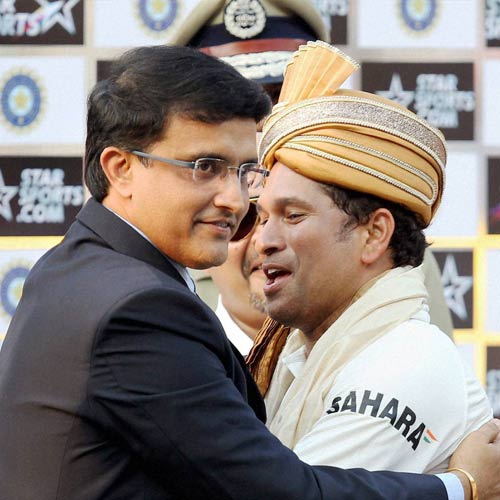The next
Nasa mission to our much-visited planetary neighbour Mars – set to launch later this month – is the first probe dedicated to examining the planet’s upper atmosphere. The Maven spacecraft will swoop in and out of the red planet’s atmosphere, with the aim of discovering why it has become so much thinner than Earth’s.
Maven (short for Mars Atmosphere and Volatile Evolution) will reach the planet next September and spend the following year flying in a highly elliptical orbit, ranging from 150km to 6,000km above the planet’s surface. The $670m mission will also include five “deep dips” down to an altitude of 120km, the lower boundary of the upper atmosphere.
Scientists believe Mars originally had a far thicker atmosphere, which would have supported a warmer and wetter climate. Martian geology provides plenty of evidence for water flowing on the surface in ancient times though none is visible now. The question is why most of the atmosphere disappeared, converting the environment from one that might once have sustained microbial life to what seems today like a barren desert.
“Maven will help us understand the climate history, which is the history of habitability,” says Bruce Jakosky of the University of Colorado, who is principal investigator on the mission. “Although Maven is not going to detect life, it’s trying to understand the environment that might have been able to support life.”
Its instruments will investigate the current state of the upper atmosphere and its interaction with the “solar wind” of electrically charged particles streaming from the sun. By determining how fast gas is lost to space today, the scientists hope to extrapolate back in time to work out the history of the Martian atmosphere.
The leading theory is that the loss of atmosphere is connected with the loss of the magnetic field that Mars originally had and Earth retains. In the absence of a protective magnetic field, the solar wind gradually stripped away most of the gases such as nitrogen, carbon dioxide and water vapour that once made up the atmosphere.
“Mars has changed enormously over its lifetime – probably more than Earth has,” says John Zarnecki, planetary science professor at the Open University. “Earth and Mars might once have been quite similar but the Martian atmosphere was stripped away and Earth’s was not.”
Zarnecki, who is not part of the Maven team, is full of praise for the mission. “It is not a cute mission with a lander and rovers that the man and woman in the street can get excited about,” he says, “but we should learn a lot from its extremely focused scientific payload.”
How reindeer change their eye-colour
Look into the eyes of a reindeer in the Arctic summer, when the sun shines around the clock, and you’ll see a bright golden colour typical of many mammals. If you do the same with a torch during the perpetual darkness of winter – a difficult task with such a frisky animal – the eyes will glow a faint blue.
This seasonal change in eye colour, which may be unique in the animal kingdom, has been analysed for the first time by scientists from Britain and Norway, funded by the UK’s Biotechnology and Biological Sciences Research Council. Their research included examination of dissected eyes from reindeer killed by Sami herders during different seasons and tests on anaesthetised live animals. The study appears in the journal Proceedings of the Royal Society B.
The change adapts reindeer sight to the continuous summer daylight and winter darkness, by altering the sensitivity of the retina to light, shape and movement. In particular, the unusual blue colour is associated with a gain in sensitivity which probably helps reindeer detect wolves – their main predators – in the dark.
The seasonal adaptation occurs in the tapetum lucidum (Latin for bright carpet), a layer of reflective tissue that lies behind the retina in the eyes of many mammals active at night. It is responsible for the “cat’s eye” effect, when eyes shine light back like little coloured mirrors. Humans do not have a tapetum.
©Dreamstime
The golden summer tapetum reflects most incoming light directly back through the retina. The blue winter tapetum behaves differently; it reflects back less light and scatters more through photoreceptors at the back of the eye. The effect is to make the retina more sensitive to low light levels.
This increased light sensitivity has a cost: the light scattering reduces acuity or sharpness of vision. But slightly blurred winter vision is a price worth paying, says lead researcher Glen Jeffery of University College London, if it enables reindeer to spot wolves creeping up through the Arctic gloom, which would be invisible without the ocular adaption.
The researchers have worked out that pressure changes within the eyes drive the seasonal variation. During continuous darkness, the pupils dilate permanently to admit as much light as possible. This expansion blocks some of the small vessels that drain fluid from the eyes, increasing their internal pressure. The winter rise in ocular pressure compresses the tapetum, which is made of long fibres of collagen protein. As the fibres are squeezed closer together, the light they reflect changes from yellow to blue – and more light is scattered within the eye.
The scientists mainly studied reindeer living in remote regions of northern Norway with no human light pollution. But they also looked at a herd maintained at the University of Tromsø, overlooking the town and exposed to permanent urban lighting in the distance. Intriguingly, these animals’ eyes did not complete a full colour change; in midwinter they maintained a green appearance that would normally be transitional between summer gold and winter blue.
An interpretation, which needs confirmation by more research, is that exposure to distant street lighting resulted in incomplete pupil dilation and pressure rise within the eye. “This could be a warning of the vulnerability of animals to light from urban and industrial expansion in the Arctic,” says Jeffery.
. . .The seasonal eye changes must have evolved fast, he adds: “This mechanism must be very recent in evolutionary terms – less than 10,000 years old – because during the ice ages there were no reindeer living in the Arctic.”
‘Wimps’ fail to show up in the gold mine
One of the biggest mysteries about the universe is the identity of dark matter. The distribution of galaxies tells scientists that there’s about five times as much dark stuff as ordinary matter out there, shaping the universe through its gravitational pull. But no one knows what it is.
The latest attempt to find out, on which some physicists pinned high hopes, has so far failed. A new experiment called Lux (short for Large Underground Xenon), a mile underground in an old gold mine in the Black Hills of South Dakota, is the world’s most sensitive dark matter detector. But the results of its first three months in action, reported last week, are negative – not a hint of a dark matter particle.
Lux is sited so deep to shield it from cosmic rays. It has 370kg of liquid xenon in a tank cooled to -100C. “Weakly interacting massive particles”, or wimps, are physicists’ most popular candidates to make up dark matter. Theory suggests that, although wimps hardly interact with ordinary matter, they must do so on very rare occasions. Then a wimp hitting a xenon atom in the tank would produce a tiny but detectable flash of light. The lack of flashes so far at Lux does not rule out wimps as candidates to make up dark matter but places further constraints on their nature.
Lux is scheduled to run for another year or so and then be replaced by a detector containing seven tons of xenon, which will be a thousand times more sensitive. If this does not find anything – and attempts to detect wimps at Cern and on the International Space Station also fail – then theorists will need a different explanation for the dark matter mystery.






 It was a memorable moment for Indian cricket fans when former captain Sourav Ganguly embraced master blaster Sachin Tendulkar during the felicitation ceremony after India defeated the West Indies by an innings and 51 runs in the first Test here at the Eden Gardens Friday.
It was a memorable moment for Indian cricket fans when former captain Sourav Ganguly embraced master blaster Sachin Tendulkar during the felicitation ceremony after India defeated the West Indies by an innings and 51 runs in the first Test here at the Eden Gardens Friday.